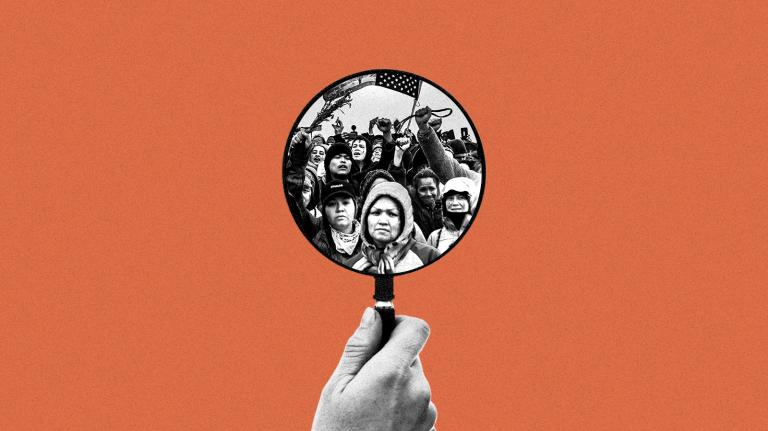Urban trees bring clean air and shade to many city dwellers — but those trees aren’t always equitably distributed between rich and poor neighborhoods. In Washington state, a first-of-its-kind effort is underway to fix that.
Representatives from the Washington state Department of Natural Resources, the government of Seattle, and the nonprofit American Forests gathered in Seattle on Thursday to announce the country’s first statewide collaborative on “tree equity,” a measure of people’s access to tree coverage and all the benefits it entails. The program aims to bring together cities, tribes, community groups, companies, and researchers to expand the tree canopy in all of Washington’s urban areas — especially those that are home to underserved populations.
“We must invest like never before, in order to ensure our most vulnerable communities have cleaner air and are better protected from extreme heat,” Hilary Franz, Washington’s commissioner of public lands, said in a statement. She told reporters on Thursday that members of the collaborative could leverage $6 million in urban and community forestry funding allocated to Washington state by the Biden administration’s landmark climate spending law, as well as some portion of another $1 billion in federal grants that the administration announced on Wednesday.
Washington’s Department of Natural Resources is also pushing state lawmakers for another $8 million in funding for urban forestry this legislative session. If approved, one-fourth of that money would be used to establish a statewide program allowing middle and high school students to participate in conservation projects.
A term coined by American Forests, tree equity takes into account not only the number of trees in a given city, but also how those trees are distributed. The concept often reveals stark disparities along racial and economic lines: Thanks to discriminatory housing policies and practices, poorer communities of color tend to experience sparser tree coverage than their whiter, more affluent counterparts.
In Seattle, for example, tree coverage tends to be high in the wealthy neighborhoods that abut Lake Washington and Puget Sound, while the opposite is true for many of the diverse and lower-income areas of South Seattle. And although citywide canopy coverage has declined by about 1.7 percent since 2016 — thanks in part to climate change-related stresses like extreme heat, as well as new development — a recent analysis from Seattle’s Office of Planning and Community Development found that the most disadvantaged communities lost tree cover more than 11 times faster than the least disadvantaged communities.

Willard Brown, a leader for Duwamish Alive, an environmental coalition of community groups and government agencies in the Seattle area, said a lack of tree cover has elevated temperatures in many of the low-income neighborhoods of color that he works in — a well-documented phenomenon known as the “urban heat island effect.” Because trees provide shade and release water from their leaves, tree-filled areas can cool ambient air temperatures by up to 9 degrees Fahrenheit, helping prevent excess mortality from heat waves and potentially lowering people’s energy bills. Trees can also reduce the risk of respiratory disease by scrubbing pollution out of the air.
As a founding member of the new tree equity collaborative, Seattle pledged on Thursday to plant 8,000 more trees on public and private properties, sow 40,000 more seedlings in parks and natural areas, and perform maintenance on 40,000 existing trees to keep them healthy — all within the next five years. Seattle’s mayor, Bruce Harrell, said at a press conference that these goals would advance the city’s existing commitment to achieve 30 percent citywide canopy coverage by 2037.
Other initial members of the collaborative include the City of Tacoma, just south of Seattle, as well as nonprofits in Spokane and Bellevue. Other entities are expected to join in the coming months. Municipalities can become members by setting their own tree canopy targets, while community groups can enroll by pledging to plant trees, conduct research, or perform community outreach.
According to American Forests, 13 million more trees are needed across the state of Washington for every city to achieve a “tree equity score” of 100 percent.
Eric Candela, American Forests’ director of local government relations, said Washington state’s push for tree equity could be a model for other states, helping uproot dated paradigms that view trees as liabilities rather than assets. Yes, trees can get in the way of power lines, he told Grist, but they also address systemic inequalities, combat climate change, and create new jobs. “If you just Google ‘benefit of trees,’ it’s almost embarrassing how many things come up,” he said. “I’m hoping that other elected officials at the state level will sit up and say, ‘Hey, that’s something that’s important in my jurisdiction.’”



